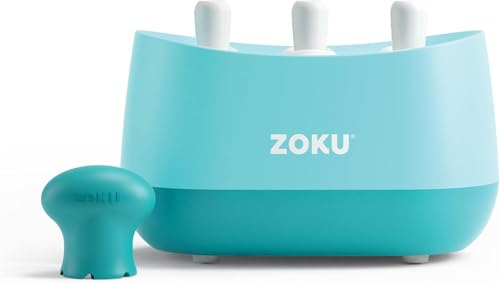

If you’re a fan of ice cream, you might be curious about the origins of the ice cream maker. Ice cream has been enjoyed for centuries, but it wasn’t until the 18th century that the invention of the ice cream making machine revolutionized the way this frozen treat was made.
The credit for inventing the first ice cream maker goes to Nancy Johnson, an American woman who created a hand-cranked device in 1843. This invention made it much easier to create homemade ice cream, as it eliminated the need for constant stirring by hand. Nancy Johnson’s ice cream maker featured a wooden tub filled with ice and salt, which helped freeze the mixture as it was churned.
However, it’s worth mentioning that Nancy Johnson was not the only person involved in the development of the ice cream maker. Before her, there were various other inventors who contributed to the advancement of this delicious dessert. For example, in 1790, an Italian inventor named Filippo Lenzi patented a refrigeration machine that could make ice cream. His device used alcohol or salt as a coolant and required constant monitoring.
Over time, the ice cream maker went through numerous improvements and modifications, leading to the creation of electric ice cream makers that we use today. Thanks to the ingenuity of inventors like Nancy Johnson and Filippo Lenzi, we can now enjoy homemade ice cream with ease and convenience.
Why We Love Ice Cream
Ice cream is one of the most beloved treats in the world. No matter the season, people of all ages enjoy indulging in a scoop or two of this frozen delight. But what is it about ice cream that makes it so universally loved?
First and foremost, ice cream is incredibly delicious. The creamy texture and wide variety of flavors make it a dessert that can be enjoyed by everyone. From classic flavors like chocolate and vanilla to more unique options like salted caramel and lavender, there is an ice cream flavor for every taste preference.
Another reason why we love ice cream is its versatility. It can be enjoyed on its own in a bowl or cone, or used to create decadent desserts like sundaes, milkshakes, and ice cream sandwiches. Ice cream can also be paired with other desserts such as pie or cake, making it the perfect complement to any sweet treat.
Ice cream also has a nostalgic quality that brings back fond memories of childhood. Whether it’s enjoying an ice cream cone by the beach or sharing a bowl with family and friends, ice cream has the ability to evoke feelings of happiness and joy.
Furthermore, ice cream is a comfort food for many people. In times of sadness or stress, a bowl of ice cream can provide a sense of comfort and relief. It is often associated with special occasions and celebrations, making it a dessert that brings people together.
Lastly, ice cream is just plain fun! The act of eating ice cream is enjoyable in itself, with the cold and creamy treat melting in your mouth. It can also be a fun activity to make your own ice cream at home using an ice cream maker or to visit an ice cream shop and try out new flavors.
In conclusion, there are many reasons why we love ice cream. Its delicious taste, versatility, nostalgic quality, comfort factor, and sheer enjoyment make it a dessert that is hard to resist. So next time you’re craving something sweet, treat yourself to a scoop or two of ice cream and indulge in its delightful goodness.
The History of Ice Cream
Ice cream, a frozen treat enjoyed by people all over the world, has a long and interesting history. Its origins can be traced back thousands of years to ancient China, Persia, and Egypt. However, it is believed that the first true ice cream, as we know it today, was created in the 16th century in Italy.
Ancient Beginnings
Around 200 BC, the Chinese were making a dessert similar to ice cream. They would mix milk and rice and then freeze it in snow. The Persians, on the other hand, would flavor snow with fruit juices and honey to create a refreshing treat. In ancient Egypt, pharaohs would have ice and snow brought from the mountains and combine it with fruit juices to make a delicious dessert.
The Birth of Modern Ice Cream
The first ice cream, as we know it today, was created in Italy during the Renaissance. This frozen treat was made by mixing cream, sugar, and various flavors, such as vanilla or chocolate. It was then cooled by placing the mixture in a metal container surrounded by ice and salt.
Ice cream quickly became popular in Europe, particularly in France and England. In fact, it was in France that the first ice cream parlor, called “Café Procope,” opened in the late 17th century. It wasn’t until the 18th century, however, that ice cream became widely available to the general public.
American Innovations
In the 18th century, ice cream-making techniques were brought to America by European immigrants. Americans quickly embraced this frozen treat, and it became a symbol of wealth and luxury. Ice cream was initially handmade, but with the invention of the ice cream freezer, the process became much easier and more efficient.
In the late 19th century, commercial ice cream production began on a larger scale. Ice cream parlors and soda fountains became popular gathering places, and various flavors and toppings were introduced, including the iconic ice cream sundae.
Today, ice cream is enjoyed by people of all ages and is available in countless flavors and variations. From traditional classics to modern innovations, the history of ice cream continues to evolve, bringing joy and delight to those who indulge in this frozen treat.
Who Invented Ice Cream?
Ice cream, a beloved frozen dessert, has a long and fascinating history. While the exact origins of ice cream are unknown, it is widely believed to have been invented in ancient China around 200 BC.
According to legend, the Chinese Emperor Tang of Shang had a method of creating ice and milk concoctions. He would send runners to the mountains to collect snow and ice, which would then be mixed with fruit and milk to create a refreshing treat.
However, it wasn’t until the 10th century that ice cream became more widespread. The Chinese are also credited with inventing the first “ice houses” or “ice ponds,” where large blocks of ice were stored underground, allowing for the preservation of perishable foods and the creation of frozen desserts.
Ice Cream in Europe
The concept of ice cream made its way to Europe through various routes. Some historians believe that Marco Polo, the famed Italian explorer, brought the recipe for ice cream from China to Italy during his travels in the 13th century.
In Italy, gelato, a type of ice cream with a lower milk content and a denser texture, became especially popular. It quickly spread across Europe, with different countries adding their own unique flavors and techniques.
Modern Ice Cream Making
The invention of the hand-cranked ice cream maker in the 18th century revolutionized the ice cream industry. It allowed for easier and faster production of ice cream, making it more accessible to a wider audience.
Throughout the centuries, various improvements and innovations were made to ice cream making techniques, resulting in the creamy and delicious treat we enjoy today. From homemade ice cream to artisanal flavors created by skilled ice cream makers, the world of ice cream continues to evolve.
The Ice Cream Maker
An ice cream maker is a popular kitchen appliance used to make homemade ice cream. It is a versatile and convenient tool that allows you to create your favorite ice cream flavors at home. But who invented the ice cream maker?
The invention of the ice cream maker is attributed to Nancy Johnson, a woman from Philadelphia, Pennsylvania. In 1843, she received a patent for her hand-cranked ice cream making machine, which revolutionized the way ice cream was made. Before her invention, ice cream was usually made by hand, requiring hours of continuous stirring to prevent the formation of ice crystals.
Nancy Johnson’s Invention
Nancy Johnson’s ice cream maker was a manual machine that consisted of a wooden barrel with a metal container inside. The ingredients for the ice cream, such as cream, sugar, and flavorings, were placed in the metal container. The barrel was then filled with a mixture of ice and salt, which helped to freeze the ice cream mixture. The crank on the side of the machine was turned by hand, causing the metal container to rotate and mix the ingredients, while the ice and salt mixture around it froze the ice cream.
Johnson’s invention revolutionized the ice cream making process by automating the mixing and freezing steps. This made it easier and more efficient for people to make ice cream at home. Her machine became a popular and widespread tool, and many variations of the design were created in the following years.
The Evolution of Ice Cream Makers
Since Nancy Johnson’s invention, ice cream makers have undergone several advancements and improvements. Manual hand-cranked machines were eventually replaced by electric models, which eliminated the need for manual labor. Modern ice cream makers also offer a variety of additional features, such as built-in freezing mechanisms and timers.
Today, ice cream makers come in various shapes and sizes, catering to different preferences and needs. Whether you prefer a traditional hand-cranked machine or a high-tech electric model, an ice cream maker is a great addition to any kitchen for those who enjoy homemade frozen treats.
FAQ
Who invented the ice cream maker?
The ice cream maker was invented by Nancy Johnson in 1843.
What is the history of the ice cream maker?
The history of the ice cream maker dates back to ancient China, where they used to make a mixture of milk and rice. However, it was Nancy Johnson who patented the first hand-cranked ice cream maker in 1843.
How does an ice cream maker work?
An ice cream maker works by churning a mixture of cream, sugar, and flavorings while simultaneously freezing it. This process helps create a smooth and creamy texture, resulting in delicious homemade ice cream.
What are some popular brands of ice cream makers?
Some popular brands of ice cream makers include Cuisinart, KitchenAid, and Breville. These brands offer a variety of models with different features to suit the needs of different individuals.







